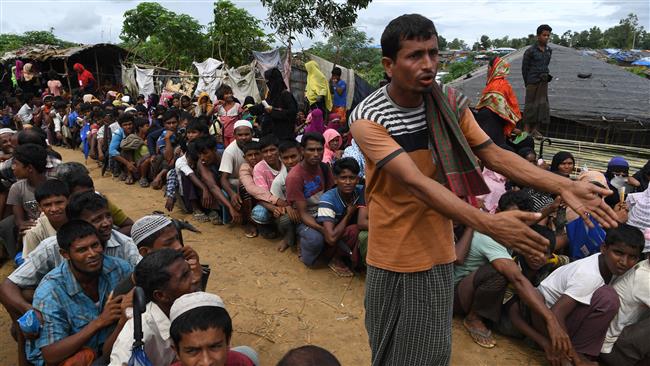
RNA - Robert Watkins, the UN resident coordinator in Dhaka, said on Saturday that housing more than 800,000 refugees in a single camp, as planned by Bangladesh for refugees fleeing violence from neighboring Myanmar, would heighten the risk of deadly diseases spreading quickly.
“It is much easier to manage people, manage the health situation and security situation if there are a number of different camps rather than one concentrated camp,” Watkins said, adding, “There are stronger possibilities, if there are any infectious diseases that spread, that will spread very quickly.”
More than half a million Rohingya Muslims have arrived in Bangladesh since August, when violence was renewed against their community in the state of Rakhine. The UN has branded the exodus as historic and a result of Myanmar’s deliberate policy of "ethnic cleansing."
Watkins said there would be a huge risk of fire spreading easily across a big camp of refugees, adding that Bangladesh should instead look for new sites to build more camps. He added that 331,000 Rohingya Muslims had already built makeshift shelters in the area where the construction of the proposed camp would be carried out.
Bangladesh plans to build the camp on 3,000 acres (1,200 hectares) of land next to a refugee camp at Kutupalong near the border town of Cox's Bazar.
The International Organization for Migration (IOM) says the proposed camp will be the world's largest and much more extensive than Bidi Bidi in Uganda and Dadaab in Kenya, both of them home to around 300,000 refugees.
The IOM, a UN agency, has accepted Dhaka's request to coordinate the work of aid agencies working on the camp site. It will also help build shelters at the new camp. Joel Millman, an IOM spokesman, said on Friday that the huge job would be carried out through thorough planning.
“700,000 is a big camp... we and our partners will have our work cut out for us,” said Millman, adding that UN agencies "wouldn't be undertaking this if we didn't think it was feasible."
847/940